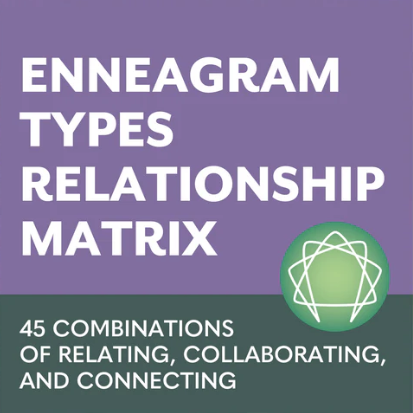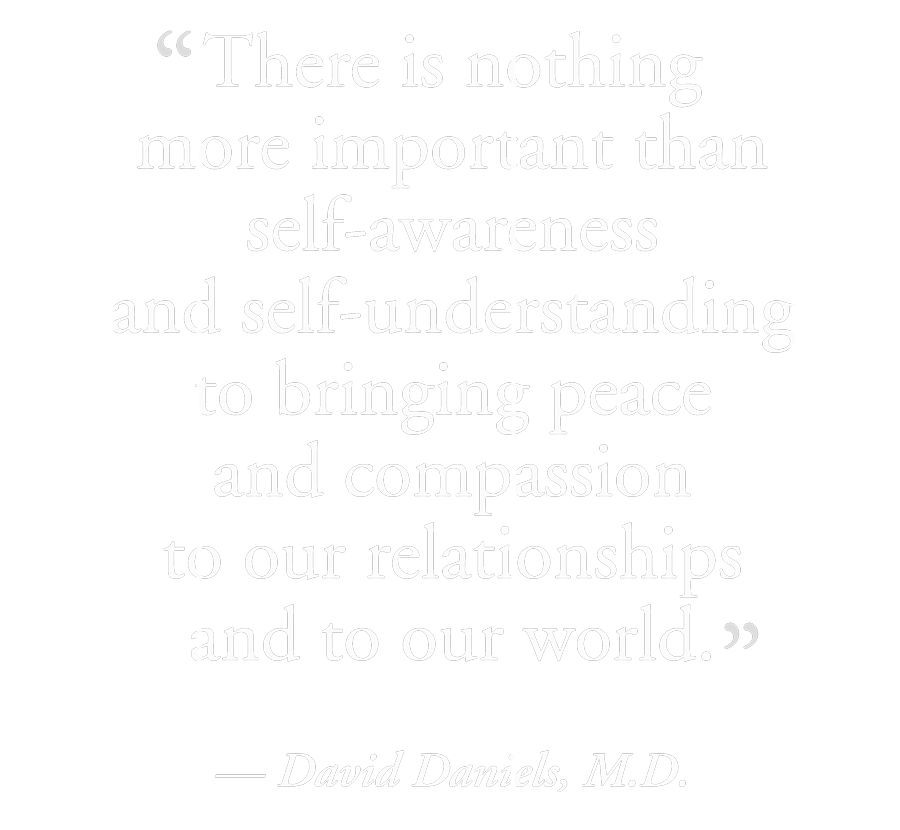Type 5 ~ The Observer
Basic Proposition
The original, omniscient state of directly knowing that the flow of universal energy meets real needs goes into the background in a world that Type 5s perceive demands too much and/or gives too little. Type 5s come to believe that they can gain protection from intrusion and insufficient resources and assure life through privacy, self-sufficiency, limiting desires and acquiring knowledge. Concurrently, Type 5s develop avarice for time, energy, knowledge and possessions. Their attention naturally goes to intrusion and detaching in order to observe. Isolation of affect glues the structure together by helping them detach or cut off from feelings and intrusion from others. Their ultimate concern or fear is ending up completely depleted, drained, or lacking sufficient resources to cope with life. As compensation, Type 5s sometimes control and dominate by becoming inaccessible, detached, overly self-sufficient, withholding, withdrawing, and miserly with your feelings.
Where Your Attention Goes
Type 5’s attention goes to their intellectual domain and their internal locus of control. In other words, they focus on thinking and self-containment, oftentimes analyzing, segmenting, and compartmentalizing what they have outwardly observed. Type 5s scan their environment to discover the things that they must accept. Because they focus on thought, Type 5s can dampen or reduce their feelings to the point of dissociation and detachment from others or the situation.
Type 5’s Stressors: What Makes Them Most Personally Reactive
Type 5s’ fixation on observation and internal thought results in numerous stressful preoccupations. Fearing unwanted intrusions or demands upon their time and energy, they feel the need to place limits and boundaries on their relationships. As a result, Type 5s might hoard an overabundance of private time and space to restore, fearing that insufficient time or space will prevent them from properly conserving their energy. Type 5s might also dread dependency, and might limit their desires, needs, or wants to only those that they can satisfy on their own.
For a Type 5, an overload of emotional input and the management of strong feelings (especially fear) can be particularly stressful, and can cause them to retreat into their private sanctuary rather than deal with the feelings at hand. The uneasiness that Type 5s can experience when working with emotions may come from the fact that feelings are abstract and that 5s – who want to learn everything and think through everything before taking action – may not be able to fully understand their own emotions. Type 5s love knowledge and predictability, and wish to anticipate demands without the confusion that feelings bring.
To self-develop, type 5s should work to diminish these preoccupations, as such reactions block them from staying engaged and connected in the security and support that love provides, and ultimately blocks their experience of life as an energy that flows freely.
Type 5’s Strengths and Weaknesses
Type 5’s Strengths
- Being scholarly and knowledgeable
- Thoughtful
- Dispassionate and calm in crisis
- Respectful
- Keeper of confidences
- Appreciative of simplicity
- Dependable and ascetic
Type 5’s Weaknesses
Difficulties Produced for Self
- Isolation from own feelings and experiences, especially in the here and now
- Detachment from life and possible withdrawal into minimization
- Pain of loneliness with a longing for connection
- Feelings of inadequacy
- Various failures to act
- Missed opportunities
- Avarice for time and space
- Confusing detachment with non-attachment
- Seeing requests as demands
Difficulties Produced for Others
- Feeling frozen out by a Type 5, to the point of feeling unconnected or uncared for
- Mistaking Type 5’s need for privacy and non-involvement as withdrawal and rejection
- Feeling that, when in conflict, the burden of confrontation falls on you
- Experiencing being judged by a Type 5 on the intellectual level
- Experiencing Type 5’s retraction as a hoarding and withholding of time, space, energy, and self
- Being hurt by tType 5’s demeaning feelings
- Interpreting Type 5’s retraction as an act made from feelings of secrecy and superiority
- Mistaking Type 5’s “hiding in a pose” or “acting from the third person” as a sign of their desire for more contact
Personality Dynamics
When Type 5s suffer from personality biases, the resulting features are biased mental and emotional dynamics. Fortunately, if Type 5s work to diminish their personality biases, they are able to return to their Essential Qualities and, consequently, attain a higher mental and emotional capacity.
Mental Center Dynamics: Stinginess and Omniscience
Mental Preoccupation (or Fixation): Stinginess
Essential Spiritual Quality (or Holy Idea): Omniscience
When Type 5 has a biased mental dynamic, they experience a Mental Preoccupation (or Fixation) called Stinginess. In Stinginess, the contains expression to preserve themself. Type 5 crates inner control by minimizing their needs, holding back from others and setting limits on relationships. Type 5 will observe, detach from the situation, and dampen their feelings.
When Type 5 restores its mental dynamic, they experience an Essential Spiritual Quality (or Holy Idea) called Omniscience. In Omniscience, Type 5 realizes that everything that is necessary is known truly. Type 5 feels a transparency of things past, present, and future as they come to know through experience and action.
Emotional Center Dynamics: Avarice and Non-Attachment
Emotional Reactivity (or Passion): Avarice
Higher Emotional Capacity (or Virtue): Non-Attachment
When a Type 5 has a biased emotional dynamic, they experience an Emotional Reactivity (or Passion) called Avarice. In Avarice, Type 5 feels greed for time, space, and knowledge, hoarding these things that they cannot do without. In acquiring these items, Type 5 tries to prevent the possibility of being “emptied.”
When a Type 5 restores their emotional dynamic, they experience a Higher Emotional Capacity (or Virtue) called Non-attachment. In non-attachment, Type 5 realizes that the flow of life energy meets their real needs, so that the 5 can take only what is needed and really desirable while letting go of what is not.
Instinctual Center & Subtypes
When any of the Enneagram types suffer from biased passion and emotional reactivity, they can either contain or compensate for the associated preoccupations through their subtypes.
Self Preservation (Self-Survival): Castle / Home
Type 5s with a self-preservation subtype cope with emotional bias by controlling their environment through hoarding time and space. They desire a room, house, special object, or place that will act as their sanctuary, keeping out others when they need it to. Sufficiency obtained through ensuring boundaries.
Sexual (Pair Bonding Survival): Confidence
Type 5s with a sexual subtype cope with emotional bias by obtaining a secure, sacred, and confidential relationship in which they feel sufficient and do not feel the need to hide. Sufficiency obtained through a reliable source.
Social (Group Survival): Totem
Type 5s with a social subtype cope with emotional bias by possessing and feeling secure in special knowledge, whether it be a system of ideas or the teachings of a religious leader or movement. With this knowledge, they are able to align themselves in the mental domain. Sufficiency obtained through intellectual acquisition.
As the Enneagram types are quite dynamic and intercorrelated, Type 5 is influenced by:
Left Wing Type 4: The Romantic
Right Wing Type 6: The Loyal Skeptic
Security Point Type 8: The Romantic
Stress Point Type 7: The Epicure
Self-Development Strategies: Attaining Higher Personality Qualities and Reuniting with Essence
The Central Theme for Type 5’s Healing and Development
Healing and development for Type 5s involves coming to grips with deep concerns regarding potential scarcity, with having too many draining emotional demands, and with not having sufficient material supplies needed to sustain their life and well being. As a consequence, Type 5s retracted into the mind, learned to detach from feelings and emotional claims, and practiced conservation of energy by reducing needs and pursuing self-sufficiency. In doing this, they did not realize that the energy it takes to retract actually leads to unrequited loneliness and even an impoverished life. For Type 5s, healing means reversing this process, although it may be counter to the way they learned to feel comfortable in the world. Moving forward into life-giving energy and building emotional contact represent the key developmental issues. In associating into feelings, experience, and connection, more life energy naturally becomes available.
How You Can Self-Develop and Fulfill Your Relationships
- Recognize and release the avarice for time, space, energy and knowledge
- Make the counter-instinctive move forward into life and feelings
- Stay present and engaged with others
- Share or give more of yourself, while taking in more support from others
- Recognize there are ample resources, and practice abundance
- Realize that the flow of a universal energy is there to meet life’s real needs
- In meditation, allowing feelings and sensations and learn the difference between detachment and non-attachment
- Noticing how your feelings detach and go to the mind compartmentalization and mentalizing
- Practicing present, “here and now” behaviors including indulging in luxuries
- Move into feelings and action
- Do body work
- Join a support group that involves self-disclosure
- Preview and reviewing release from control of time, space, energy, and thoughts each day
- Notice that withdrawal and withholding leads to intrusion
- Behave as if there is an abundance of time, space, and energy
How You Can Help a Type 5 Self-Develop and Fulfill Their Relationships
- Encourage Type 5s to welcome their feelings in the here and now, to express concerns, confront conflict, and release control of time and energy
- Provide moderate feedback about your own feelings and concerns
- Respect their need for privacy, understanding their privacy is not rejection
- Make distinctions between requests and demands
- Recognize intellectualization and modify as is appropriate for the situation, bringing feelings and sensitivity to others back online
Need help finding your Enneagram type? Take the scientifically validated Enneagram test online or through the paper-back book version found in Dr. David Daniels’ The Essential Enneagram.
To find out more about these and other typing methods, click here.






